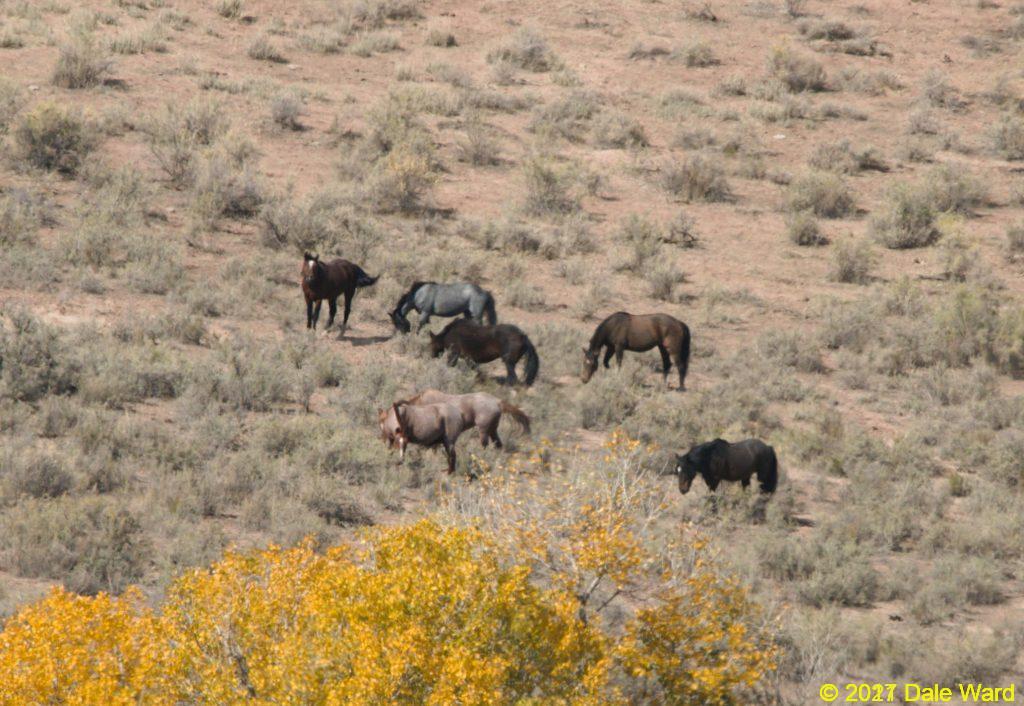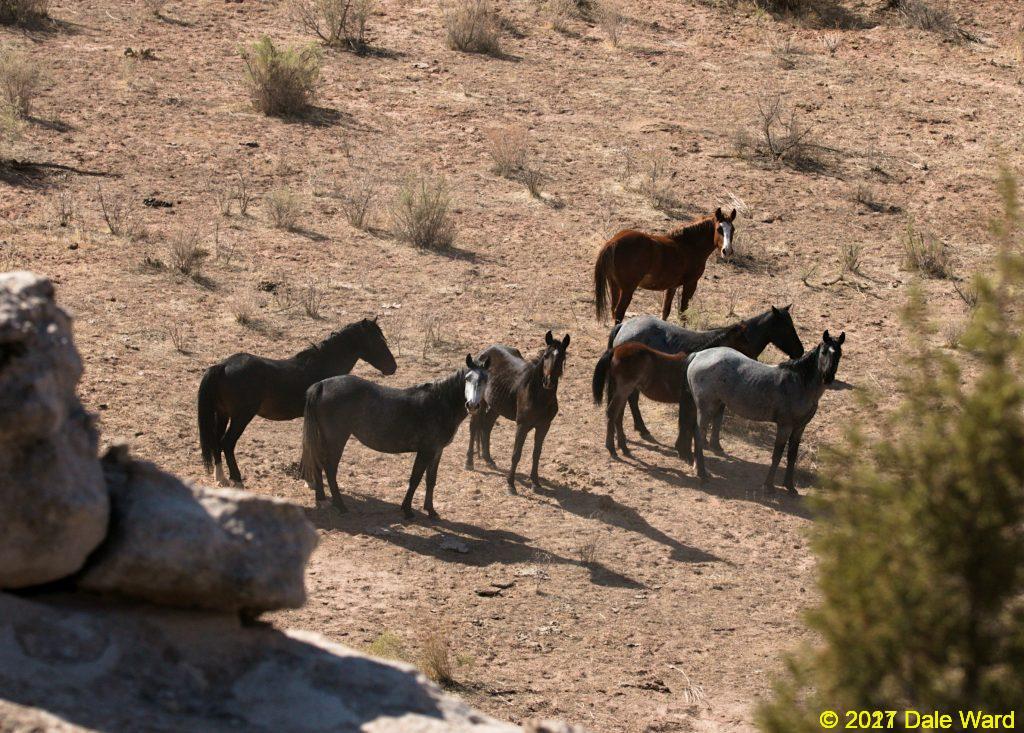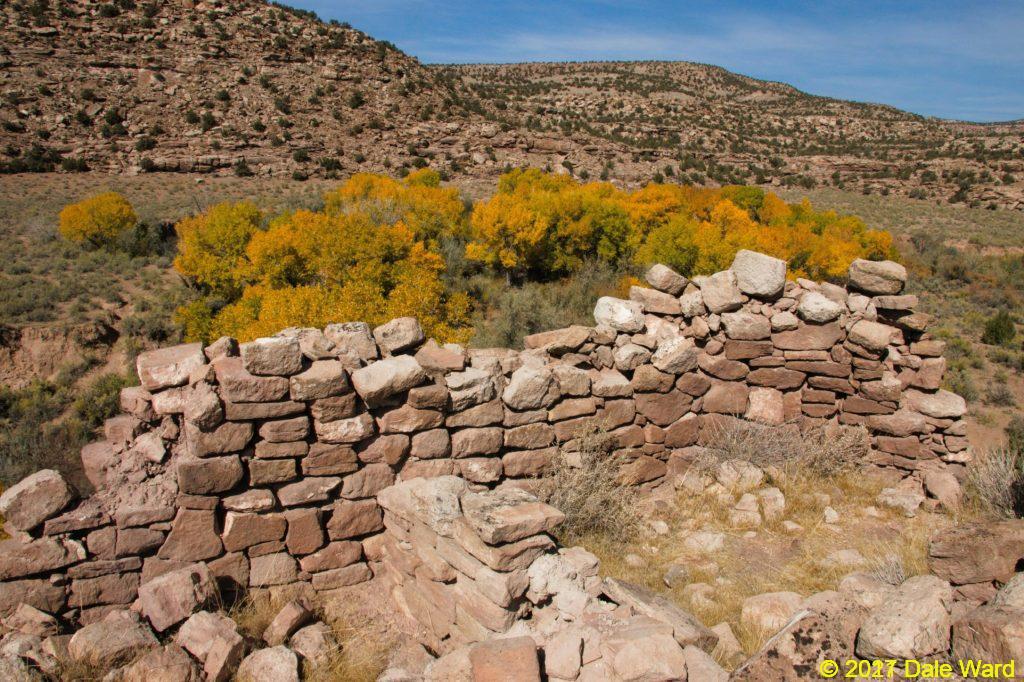Unexpected Treasures - Watching Mustangs and Ruins in Canyons of the Ancients
An account of watching ruins and mustangs in Southwestern Colorado
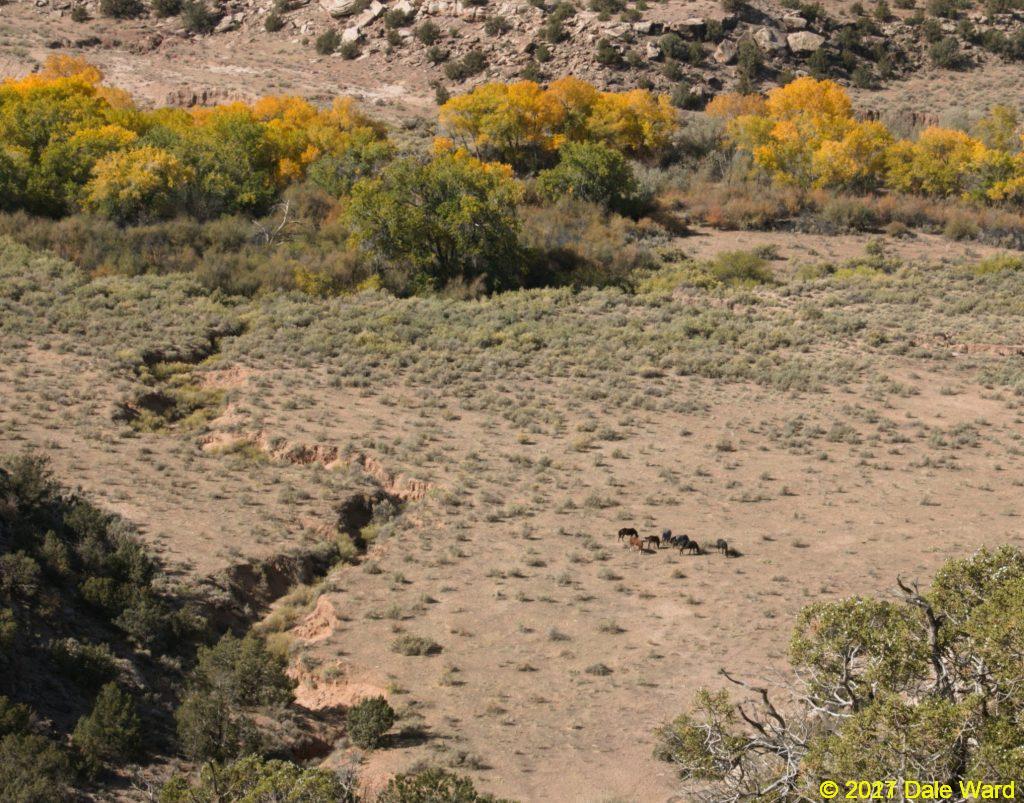 Looking down from the cliffs onto a band of seven mustangs
Looking down from the cliffs onto a band of seven mustangs
I got out of the jeep and started to hike into the desert. I went across the flats and up a hill overlooking a broad canyon lined with broken, shattered cliffs. I planned a nice, restful visit to the Canyons of the Ancients. Maybe just sit on a boulder, watch the sun move across the sky - something like that. I had left the bulky, heavy telephoto lens back in the jeep, and was only carrying my small lens.
I went over the hilltop, picked my way through the boulders to a cliff edge. That’ll be a nice spot to sit, I thought. As I looked down, I saw a group of seven mustangs. They just looked like dots when I took photos of them with the short lens I’d brought with me. I picked my way down the shattered cliff to get closer to them.
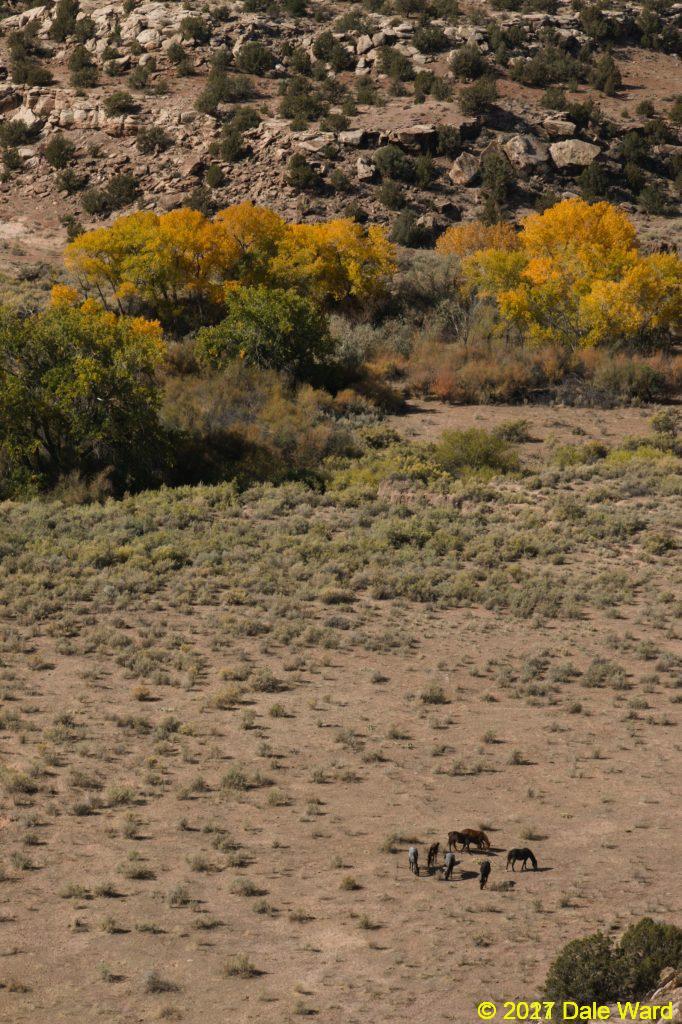 Another view of the mustangs in the canyon bottom.
Another view of the mustangs in the canyon bottom.
They knew I was above them, I could see them look up at me every now and then. But they did not seem very concerned, they just continued with what they were doing.
I hiked back to the jeep to get my longer lens. When I got back again, the horses were about where I’d left them, slowly drifting along the canyon bottom.
With the longer lens, I could see that some of the mares looked a little thin. There was one foal with them, a bay.
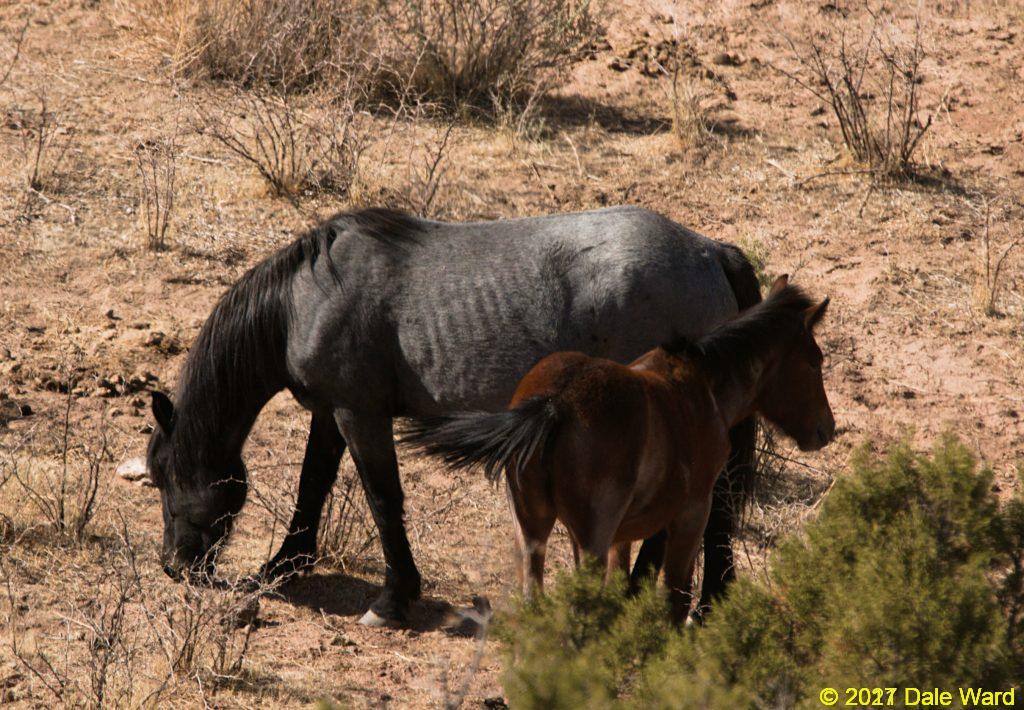 Mare and foal. The mares were ribby.
Mare and foal. The mares were ribby.
The bay foal was not at all concerned with my presence. He lay down and rolled in the dust on the canyon bottom.
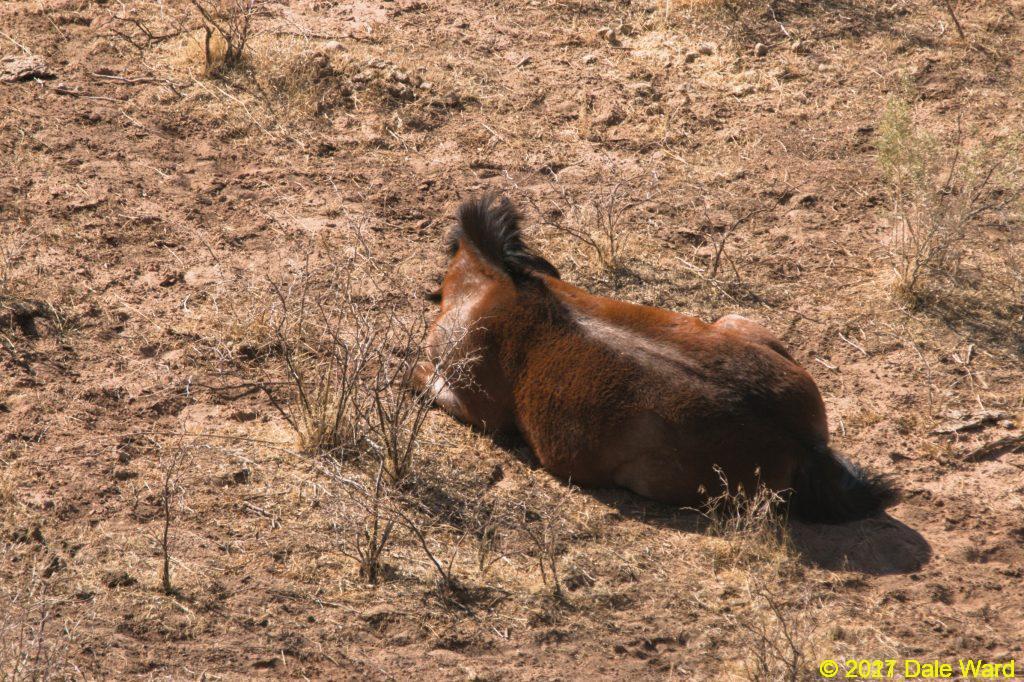 Mustang foal lays down and rolls in the dust of the canyon bottom.
Mustang foal lays down and rolls in the dust of the canyon bottom.
After a few minutes of watching, something made the horses alert. They perked their ears up and looked around intently. Then they took off at a trot down the canyon, kicking up a cloud of dust. They climbed up through the boulders and trotted out of sight.
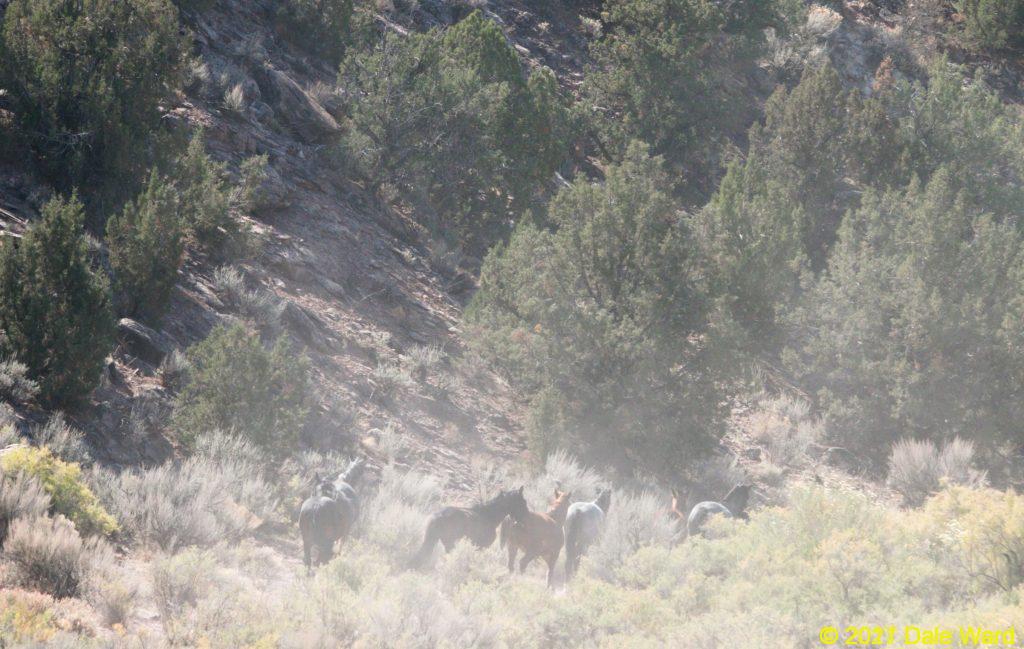 The mustangs run off up the canyon in a cloud of dust
The mustangs run off up the canyon in a cloud of dust
I sat on the cliff alone, soaking in the sun and letting the sweat dry off of my back. I happened to look across the canyon - and there was another herd of horses. This band had 15 or 16 horses in it.
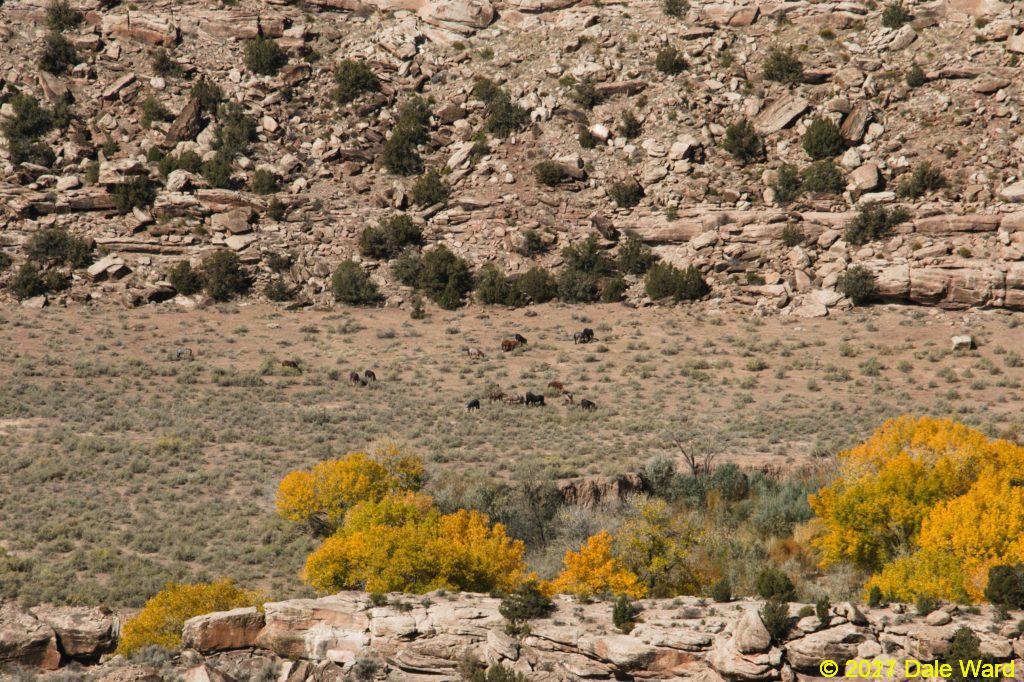 Mustangs on the other side of the canyon. There are about 15 or 16 in this band. The rocky ‘peninsula’ is running along the bottom edge of the photo. It divides the canyon bottom into two.
Mustangs on the other side of the canyon. There are about 15 or 16 in this band. The rocky ‘peninsula’ is running along the bottom edge of the photo. It divides the canyon bottom into two.
There was a rocky ridge running longitudinally down the center of the canyon, forming a peninsula of rock - you can see it in the lower edge of the photo above. There was something eye-catching about the rocks on the ridge. If you look at the extreme left-hand corner of the photo, you can see what caught my eye - the small scattering of rocks that are sometimes associated with ruins.
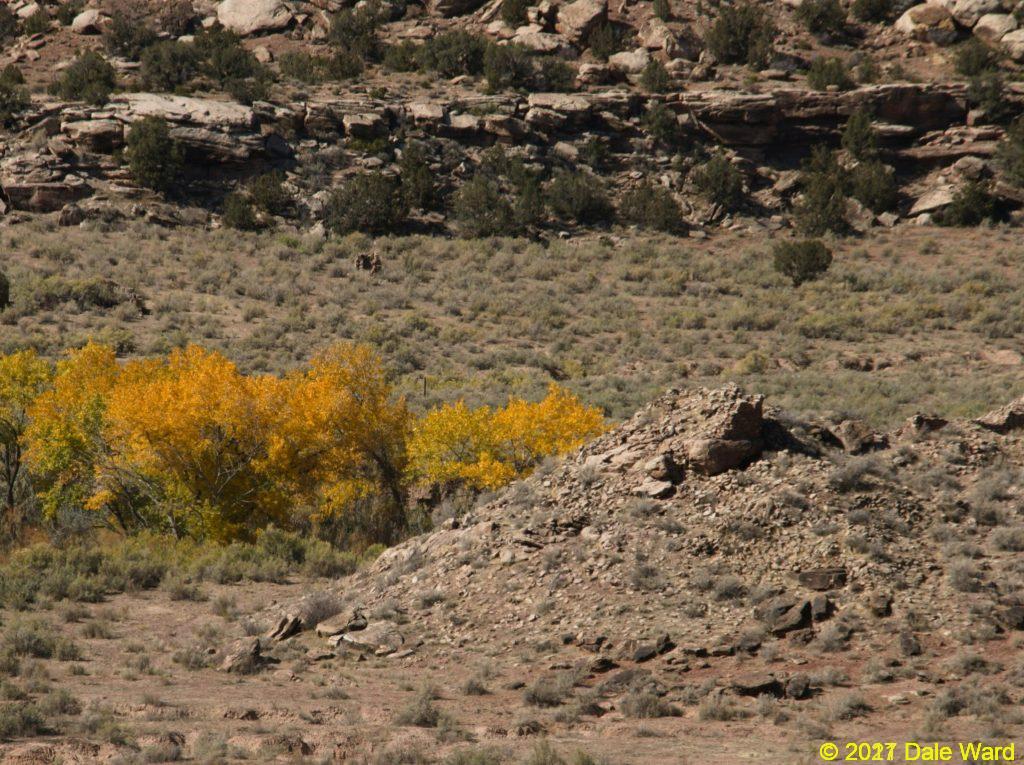 Ruins at the end of the rocky peninsula
Ruins at the end of the rocky peninsula
I looked harder at the peninsula - yup, there were ruins on it. I decided to hike down the cliff, maybe get photos of the ruins with the mustangs in the background.
I was able to get low enough on the broken cliff so that the ruins on the peninsula lined up with the horses on the other side of the canyon. The long telephoto lens I had with me made the mustangs look much, much closer to the ruins than they actually were.
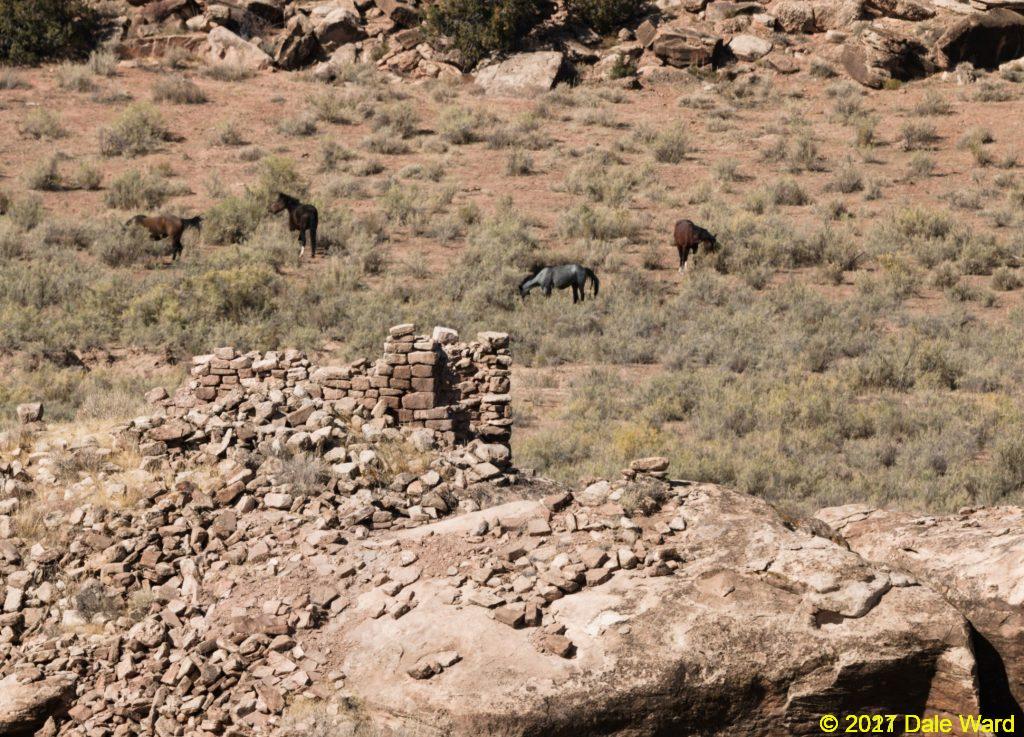 Ruin with mustangs in the background. The mustangs are a couple tenths of a mile away from the ruin, which is on a ridge that runs through the canyon bottom.
Ruin with mustangs in the background. The mustangs are a couple tenths of a mile away from the ruin, which is on a ridge that runs through the canyon bottom.
I kept hiking until I got to the canyon bottom, then across the canyon bottom and up the rocky peninsula where the ruins were. I went slowly, peering over the crest to try not to disturb the horses.
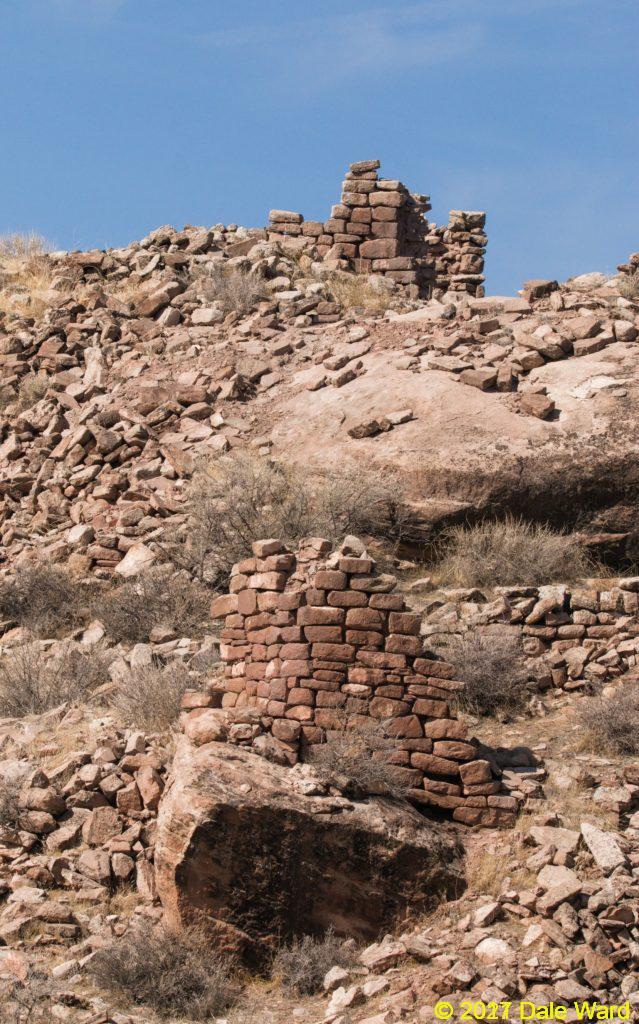 Ruins on the rock peninsula on the canyon floor
Ruins on the rock peninsula on the canyon floor
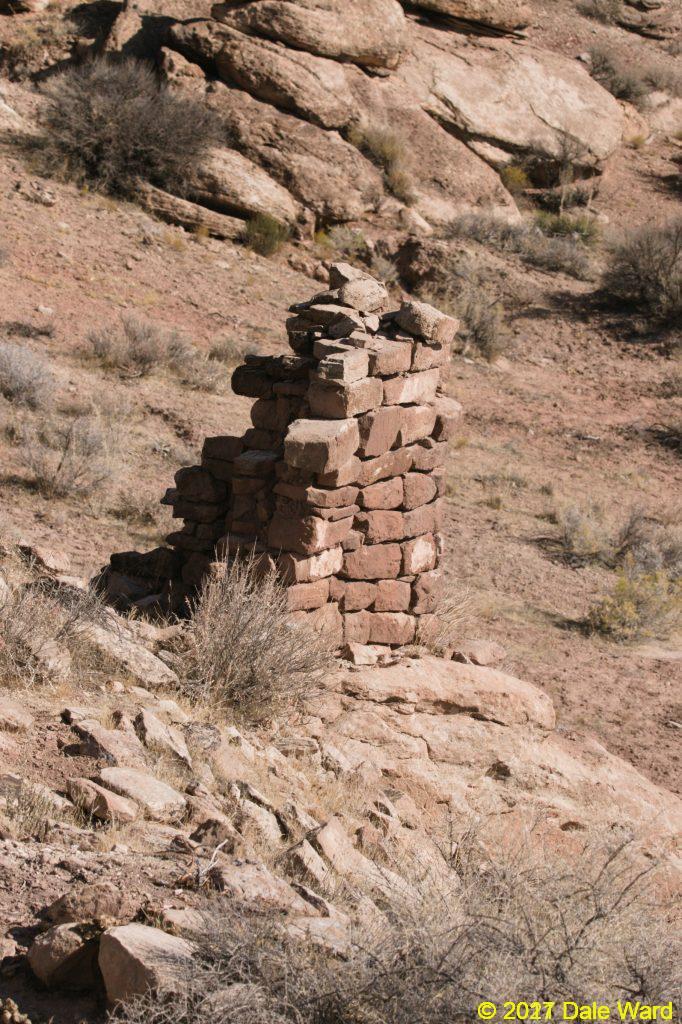 Ruins on the rock peninsula on the canyon floor
Ruins on the rock peninsula on the canyon floor
I reached the top of the peninsula of rock and carefully peered over the edge. The mustangs came back into view. They saw me, but did not seem very concerned. I sat and watched the mustangs as they picked their way up the canyon, pausing to graze every few minutes. I noticed that there were a couple of other ruins on the floor of the canyon, nearer to the horses. This site must have been populous, back in the day.
I waited ten or fifteen minutes, and eventually the horses reached one of the canyon-floor ruins. One by one, they passed the ruin as they slowly worked their way along. Some of them would stop and look at me as they ambled along.
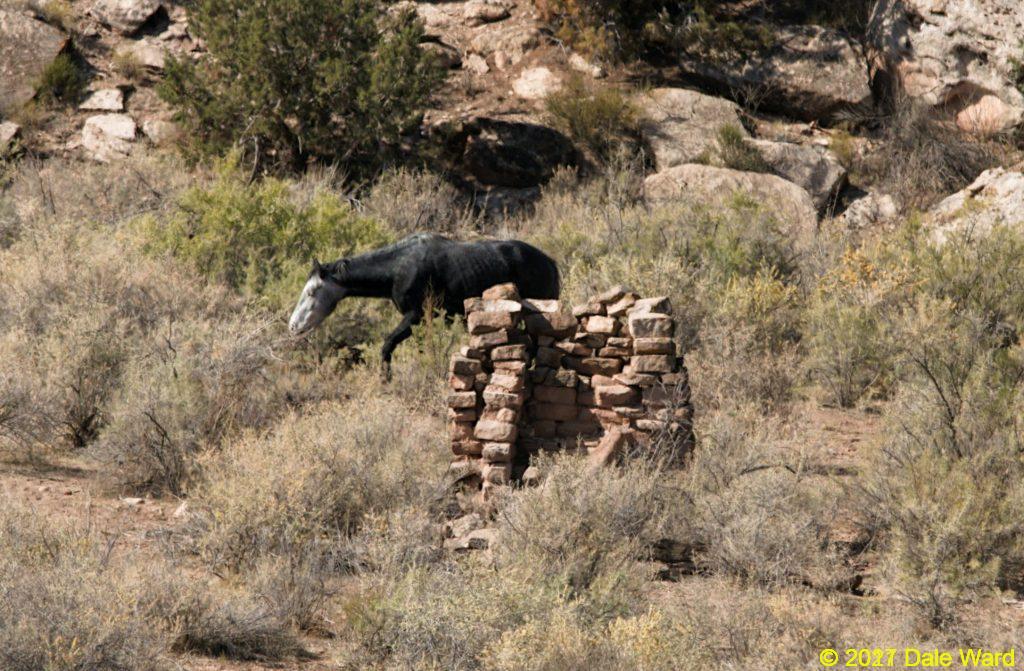 Mustang picks her way past a ruin on the canyon floor
Mustang picks her way past a ruin on the canyon floor
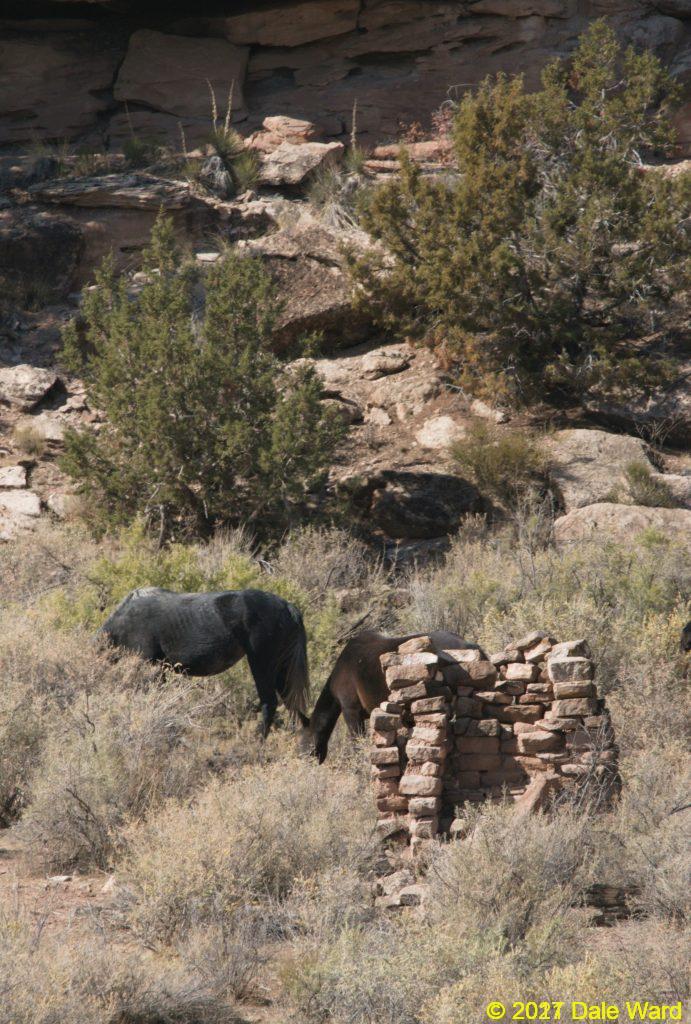 The band walked past this small ruin fragment, grazing as they went.
The band walked past this small ruin fragment, grazing as they went.
Eventually, the band was stretched in in a line, with half of the horses to the left of the ruin and half to the right. The lead horses, the ones in the left, seemed uncomfortable, and they turned around and headed back towards the other horses.Some of the horses stopped and turned towards me.
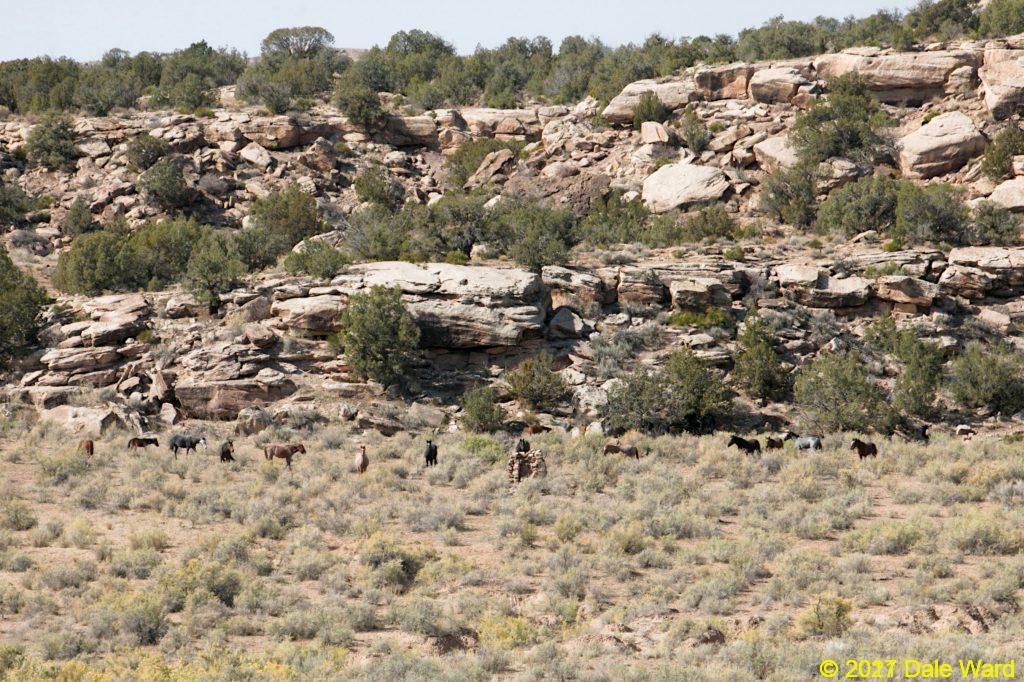 The smaller ruin fragment is in the center portion of the photo. The band is lined up behind the ruin, as they travel from left to right. They’re looking at me at this point - I’m probably 200 yards away.
The smaller ruin fragment is in the center portion of the photo. The band is lined up behind the ruin, as they travel from left to right. They’re looking at me at this point - I’m probably 200 yards away.
A few of the horses snorted and blew. Maybe these ones had just noticed me? They started to trot to the left, down the canyon. Then more of them started to trot, then they all broke into alope. Even as far away from them as I was, I could hear the thunder of their hooves.
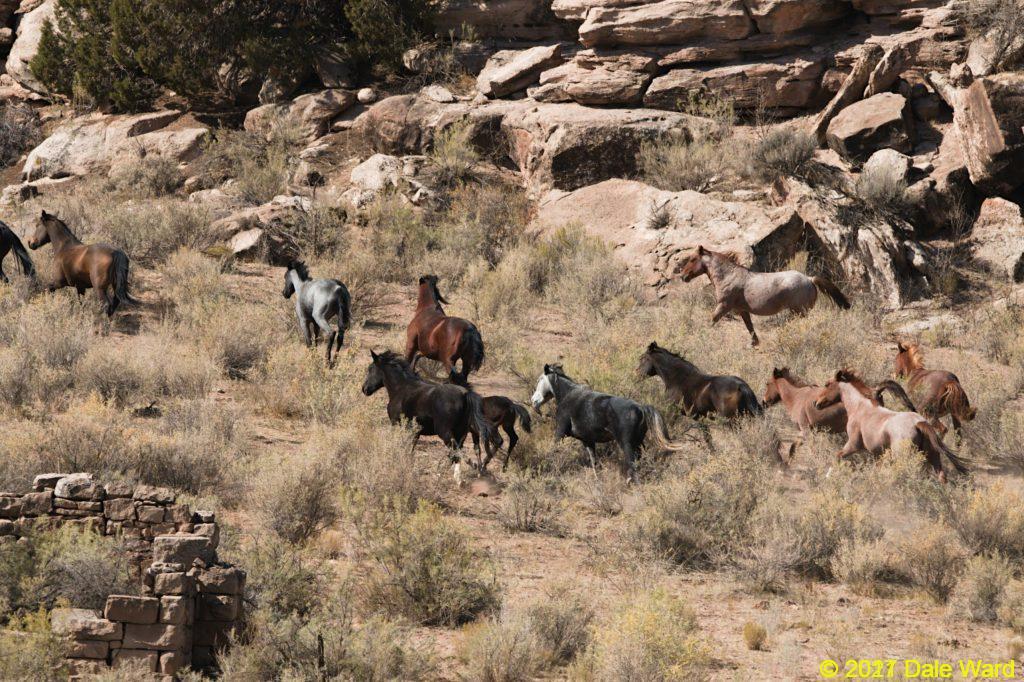 The mustangs run by a ruin. My long telephoto is foreshortening the picture, they are not as close to the ruin in the lower left as they appear in this picture. This is probably my favorite photo of the day.
The mustangs run by a ruin. My long telephoto is foreshortening the picture, they are not as close to the ruin in the lower left as they appear in this picture. This is probably my favorite photo of the day.
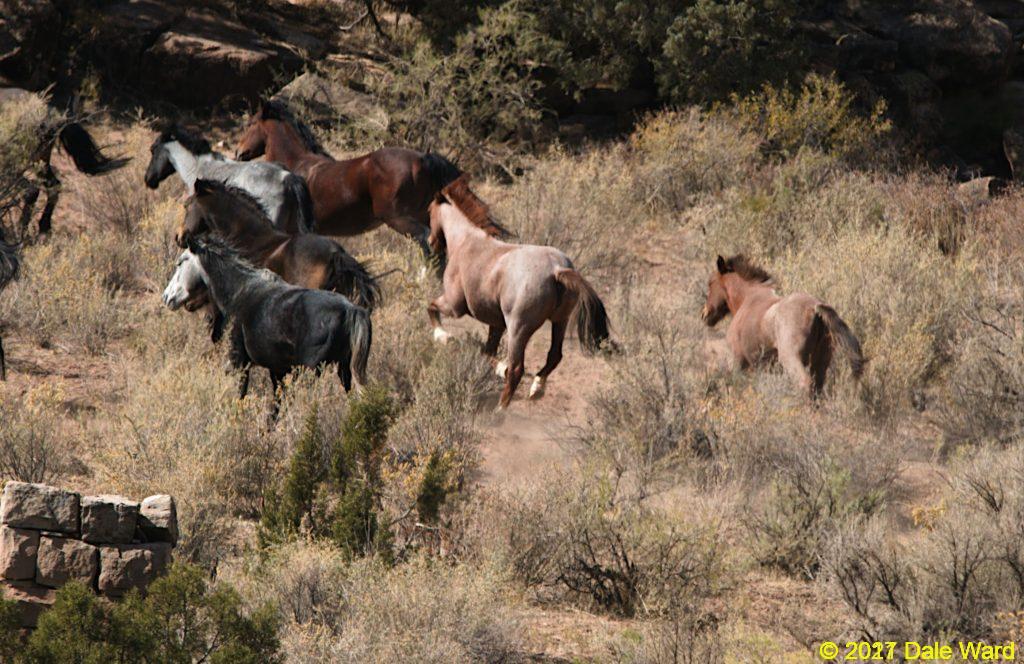 The mustangs run by a ruin. My long telephoto is foreshortening the picture, they are not as close to the ruin in the lower left as they appear in this picture.
The mustangs run by a ruin. My long telephoto is foreshortening the picture, they are not as close to the ruin in the lower left as they appear in this picture.
The mustangs ran up the slopes of the canyon, threading between the boulders at a run. Their hooves thundered on the slope, and I could hear the ring and clatter of stones.
In no time at all, the mustangs had disappeared into the rocks and junipers.
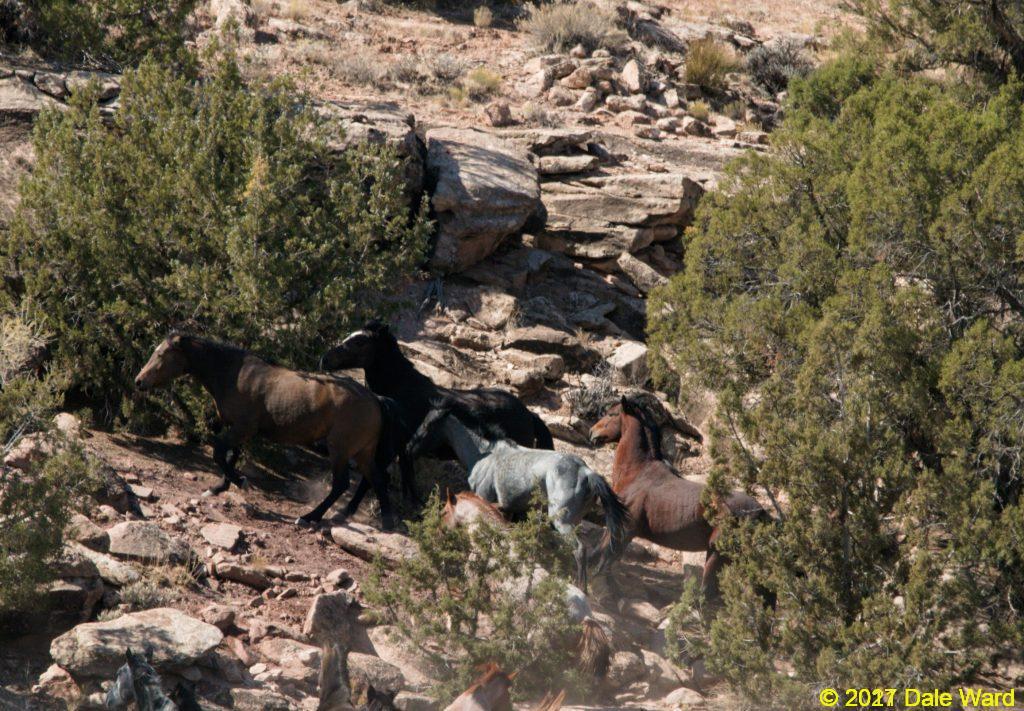 The band ran up the broken steep slope on the other side of the canyon.
The band ran up the broken steep slope on the other side of the canyon.
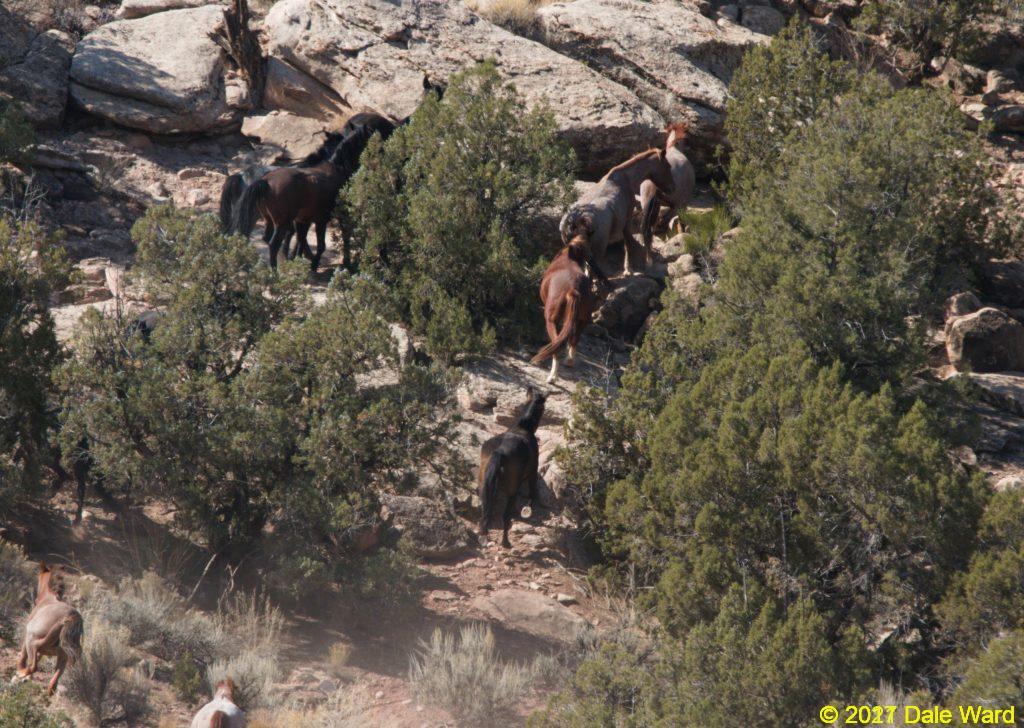 The large band of mustangs runs up the shattered cliffs on the far side of the canyon
The large band of mustangs runs up the shattered cliffs on the far side of the canyon
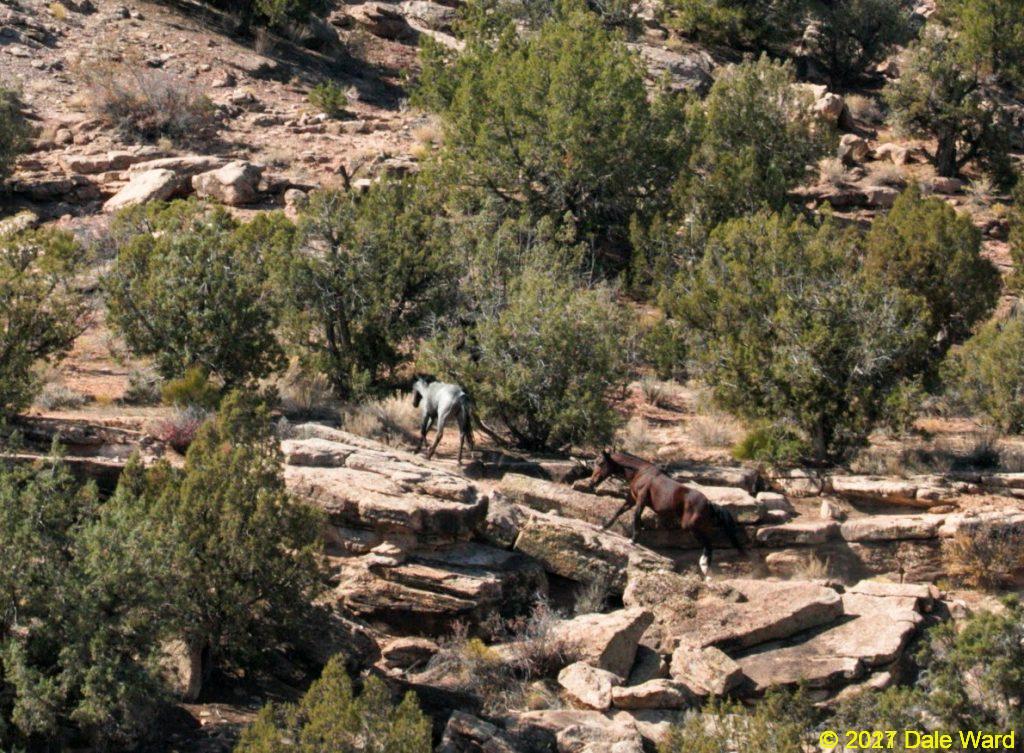 The last two mustangs running up the broken rocks of the canyon
The last two mustangs running up the broken rocks of the canyon
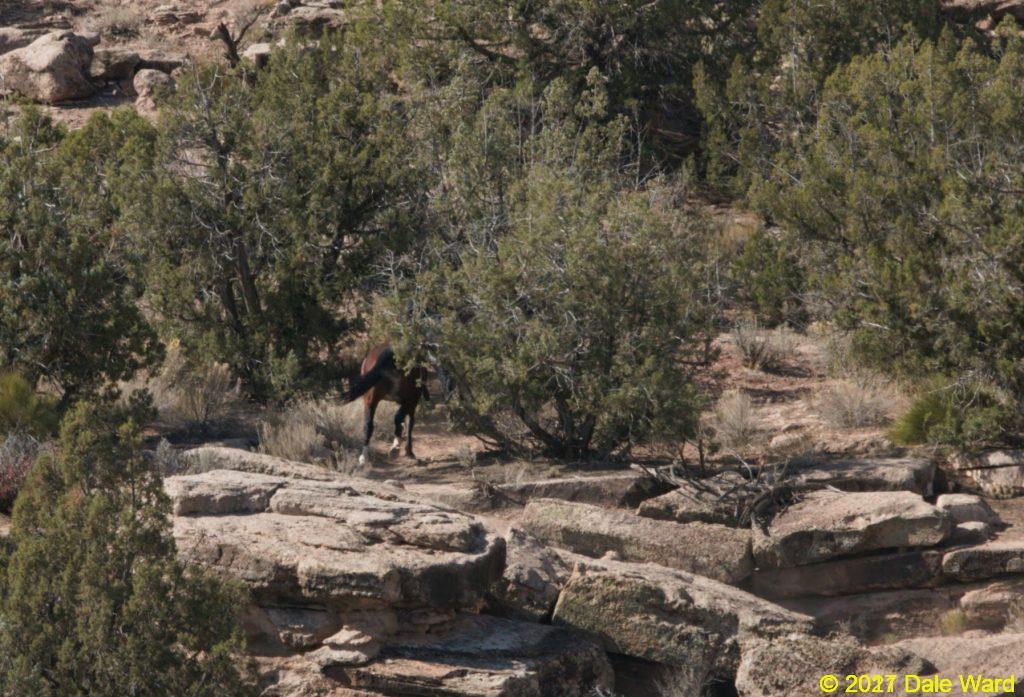 …and they disappear into the junipers.
…and they disappear into the junipers.
I sat quietly and sipped my bottle of water for ten or fifteen minutes more, waiting to see what else would happen. Then I looked back the way I’d come and tried to figure the easiest way to climb out of the canyon.
As I picked my way slowly through the loose rock and boulders, every now and then I’d see hoof prints in the soil.
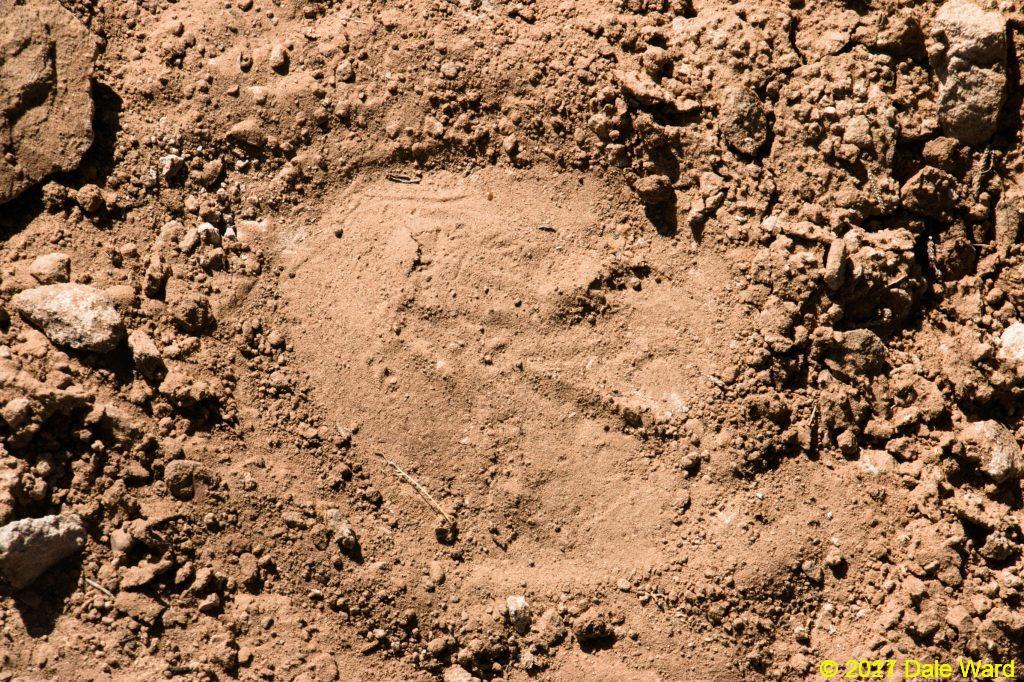 Hoofprint in the dust of one of the narrow trails winding up the cliffs. Notice the frog contact over the entire foot, though the soil is not very deep here.
Hoofprint in the dust of one of the narrow trails winding up the cliffs. Notice the frog contact over the entire foot, though the soil is not very deep here.
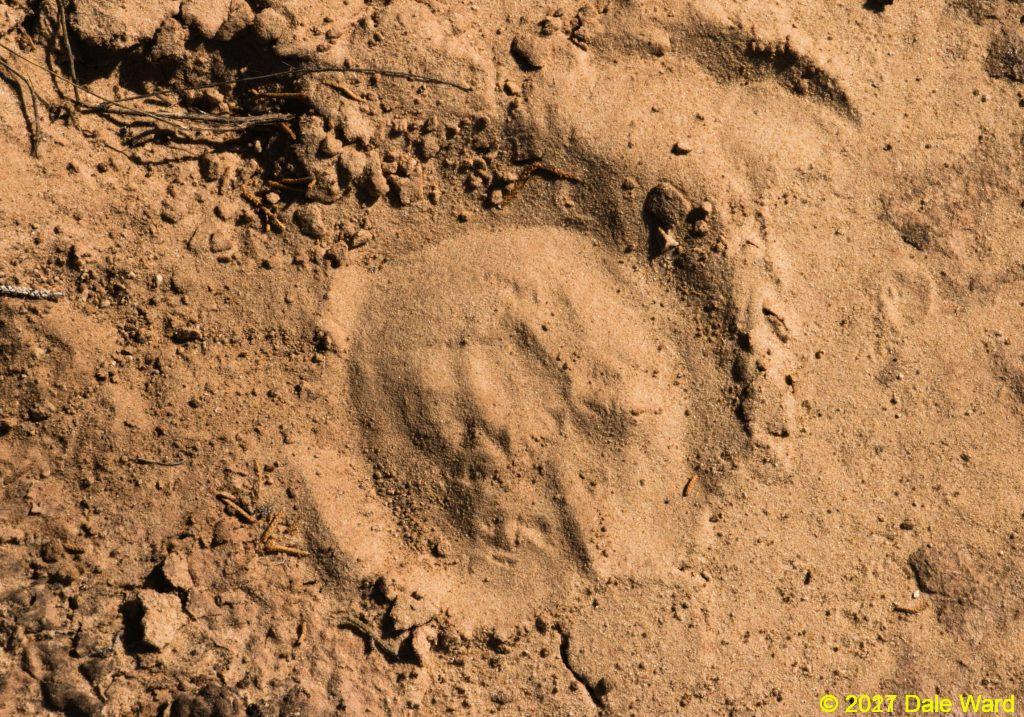 Hoofprint in the dust of one of the narrow trails winding up the cliff. Frog contact throughout, concave sole. Distinct but not high hoof-wall.
Hoofprint in the dust of one of the narrow trails winding up the cliff. Frog contact throughout, concave sole. Distinct but not high hoof-wall.
I don’t know how I’d missed the tracks on my way in. It seemed as though I was seeing them everywhere now. It was interesting to look at the variety of track sizes and shapes. I also wondered how the horses had managed to leave prints in some of the places that they had, since it was all I could do to climb ip some of the ledges.
I’d love to know more about these horses. How many are here? Is their population stable? What regulates it? In some other parts of the country, lion predation on foals regulates the mustang population. This is great lion country - does foal predation regulate the horses here? Is that why the horses run when they get to the cover of the boulders and junipers, their concerns about lions?
